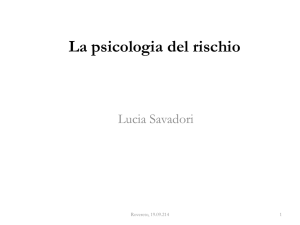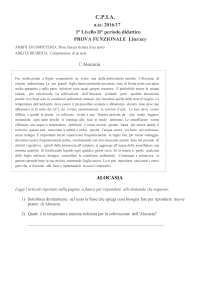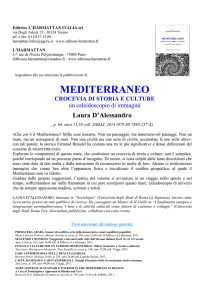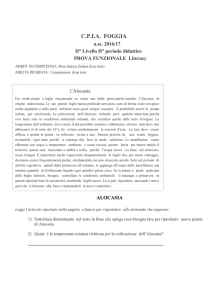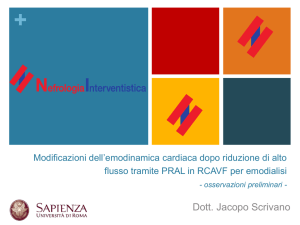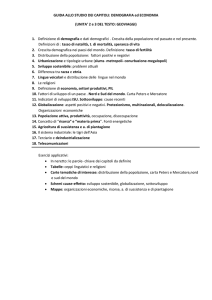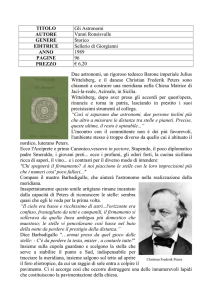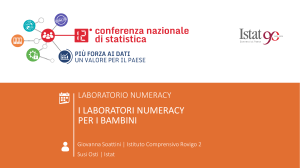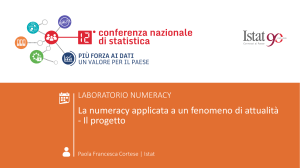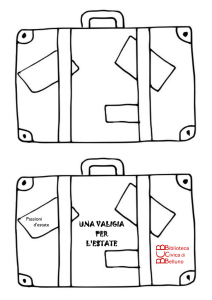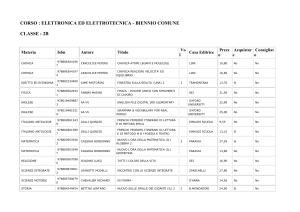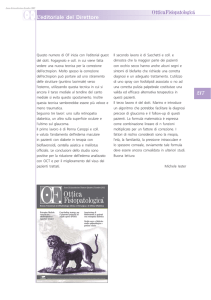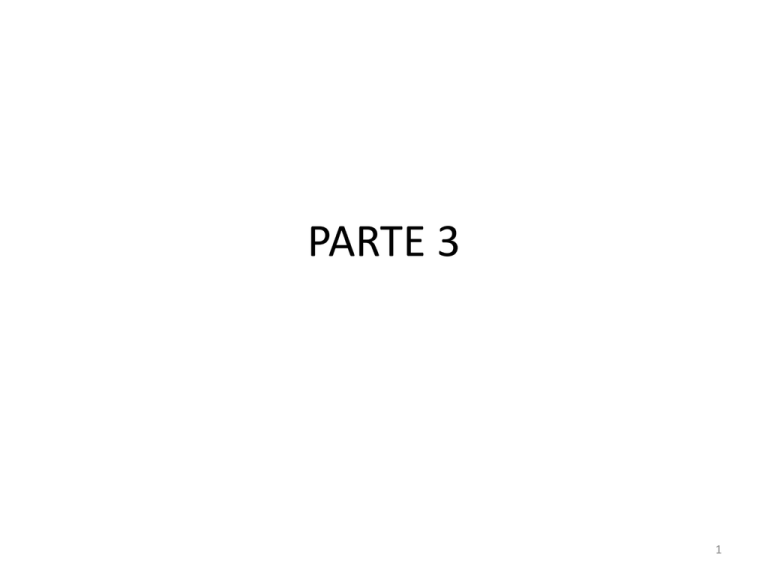
PARTE 3
1
Le informazioni statistiche
• Comunicare un rischio verbalmente è una operazione
difficile non solo perché il rischio non è codificato
“sensorialmente” ma anche perché la nostra mente
fa difficoltà a comprendere il significato di
informazioni statistiche.
– Es. la probabilità di contrarre la malattia è di 0.005
“Numeracy”
• Il termine “numeracy” deriva dalla contrazione di
"numerical literacy“ ed indica l’abilità di comprendere ed
usare concetti di base della probabilità e della
matematica.
• Circa 1 americano su 2 non possiede i requisisti
matematici minimi per comprendere i numeri che legge
sui giornali (Kirsch e coll., 2002).
La scala di Numeracy di Lipkus (da Savadori et al., 2007)
% corrette
11. La probabilità di prendere una infezione virale è di 0,0005. Su 10.000 persone, quanti
all’incirca saranno gli infettati? (5)
30%
3. Nella lotteria gratta e vinci, la probabilità di vincere una macchina è di 1 su 1000. Quale
percentuale di biglietti della lotteria vincerà una macchina? (0,1)
38%
1. Immagina che un dado non truccato venga lanciato 1000 volte. Su 1000 lanci quante volte
uscirà un numero pari (2,4,6)? (500)
2. In una determinata lotteria la probabilità di vincere un premio di €10 è pari all’1%. Secondo
te, quante persone potrebbero vincere un premio di €10 se 1.000 persone comprano un
singolo biglietto della lotteria a testa? |________| (10)
10. Se la probabilità di contrarre una malattia è pari a 20 su 100, ciò dovrebbe corrispondere
alla probabilità del |__________| % di contrarre quella malattia (20)
50%
7. Se il rischio della persona A di contrarre una malattia nei prossimi 10 anni è pari a 1 su 100, e
quello della persona B è il doppio di quello della persona A, qual è il rischio della persona B?
|_________| (2 su 100)
68%
9. Se la probabilità di contrarre una malattia è pari al 10%, quante persone in un campione di
1000 ci si deve attendere che contrarranno quella malattia? |__________| (100)
68%
6. Se il rischio della persona A di contrarre una malattia nei prossimi 10 anni è pari all’ 1%, e
quello della persona B è il doppio di quello della persona A, qual è il rischio della persona B?
|_________| (2%)
72%
8. Se la probabilità di contrarre una malattia è pari al 10%, quante persone in un campione di
100 ci si deve attendere che contrarranno quella malattia? |________| (10)
75%
4. Quale dei seguenti numeri rappresenta il più alto rischio di contrarre una malattia? 1 su
100, 1 su 1000, 1 su 10 (1 su 10)
5. Quale dei seguenti numeri rappresenta il più alto rischio di contrarre una malattia? 1%,
10%, 5% (10%)
80%
59%
64%
82%
Item n. 4. Quale dei seguenti numeri rappresenta il più
alto rischio di contrarre una malattia? 1 su 100, 1 su
1000, 1 su 10?
% corrette
96%
Universitari
94%
Più delle
superiori
83%
Superiori o
meno
71%
Adulti più
anziani (65-94)
Peters, Västfjäll, e coll., 2006, Psychological Science;
Peters, Dieckmann, e coll., 2007, Medical Care Research & Review;
Hibbard, Peters, e coll., 2007, Medical Care Research & Review;
Item n. 11. La probabilità di prendere una infezione
virale è di 0,0005. Su 10.000 persone, quanti all’incirca
saranno gli infettati?
% corrette
46%
33%
Universitari
Più delle
superiori
13%
11%
Superiori o
meno
Adulti più
anziani (65-94)
Peters, Västfjäll, e coll., 2006, Psychological Science;
Peters, Dieckmann, e coll., 2007, Medical Care Research & Review;
Hibbard, Peters, e coll., 2007, Medical Care Research & Review;
Differenze di genere
Femmine
7,8
8,5
7,9
Maschi
8,5
6,9
6,6
5,5
Universitari
Più delle
superiori
Superiori o
meno
5,4
Adulti più
anziani (65-94)
Peters, Västfjäll, e coll., 2006, Psychological Science;
Peters, Dieckmann, e coll., 2007, Medical Care Research & Review;
Hibbard, Peters, e coll., 2007, Medical Care Research & Review;
8
Science Literacy
• http://www.nsf.gov/statistics/seind14/
• https://www.amacad.org/content/publication
s/pubContent.aspx?d=1118
Kahan, D. M., Peters, E., Wittlin, M., Slovic, P., Ouellette, L. L., Braman, D., &
Mandel, G. (2012). The polarizing impact of science literacy and numeracy
on perceived climate change risks. Nature Climate Change, 2(10), 732-735.
• Seeming public apathy over climate change is often attributed to a deficit in
comprehension. The public knows too little science, it is claimed, to
understand the evidence or avoid being misled1.
• Widespread limits on technical reasoning aggravate the problem by forcing
citizens to use unreliable cognitive heuristics to assess risk2.
• We conducted a study to test this account and found no support for it.
Members of the public with the highest degrees of science literacy and
technical reasoning capacity were not the most concerned about climate
change. Rather, they were the ones among whom cultural polarization was
greatest.
• This result suggests that public divisions over climate change stem not from
the public’s incomprehension of science but from a distinctive conflict of
interest: between the personal interest individuals have in forming beliefs in
line with those held by others with whom they share close ties and the
collective one they all share in making use of the best available science to
promote common welfare.
Why does public conflict over societal risks persist in
the face of compelling and widely accessible scientific
evidence?
• Answer 1: the “Science Comprehension Thesis” (SCT):
identifies defects in the public’s knowledge and reasoning
capacities as the source of such controversies
• Answer 2: the “Identity-protective Cognition Thesis” (ICT),
which treats cultural conflict as disabling the faculties that
members of the public use to make sense of decision relevant
science.
Experiment (Kahan, et al. 2013)
Experiment (Kahan, et al. 2013)
Experiment (Kahan, et al. 2013)
• We presented subjects with a difficult problem that turned on their ability
to draw valid causal inferences from empirical data.
• As expected, subjects highest in Numeracy—a measure of the ability and
disposition to make use of quantitative information—did substantially
better than less numerate ones when the data were presented as results
from a study of a new skin-rash treatment.
• Also as expected, subjects’ responses became politically polarized—and
even less accurate—when the same data were presented as results from
the study of a gun-control ban.
• But contrary to the prediction of SCT, such polarization did not abate
among subjects highest in Numeracy; instead, it increased. This outcome
supported ICT, which predicted that more Numerate subjects would use
their quantitative reasoning capacity selectively to conform their
interpretation of the data to the result most consistent with their political
outlooks.
Figure 4 presents a scatter plot of subject responses in the skin-treatment conditions. It supplies strong support for the first hypothesis—that the likelihood
of correctly interpreting the data in the skin-treatment conditions would be conditional on numeracy. Reflecting, the difficulty of the task, subjects of low
and even moderate Numeracy scores were more likely than not to select the wrong answer in both “rash decreases” and “rash increases.” Even among
those scoring in the top 50% on the Numeracy scale (4 or more answers correct), less than half (48%) supplied the correct answer. It was not until scores on
the Numeracy scale reached 90th percentile or above (7-9 correct) that 75% of the subjects correctly identified the result most supported by the data in the
2x2 contingency table.
15
Figure 5 presents a scatter plot of subject responses in the gun-control condition. The pattern differs from that in the skin-treatment conditions. The impact
of Numeracy on performance in the “crime increases” condition is minimal. The proportion of subjects correctly interpreting the data did increase as
Numeracy increased in the “crime decrease” condition, but even at the highest levels of Numeracy, the percentage of subjects who supplied the incorrect
response in that condition was relatively high. Overall, even among subjects in the 90th percentile, only 57% of those assigned to one of the gun-control
conditions correctly identified the outcome most supported by the data. The discrepancy is consistent with the inference that a factor present in the guncontrol conditions but not in the skin-treatment ones inhibits the contribution Numeracy makes to identifying the correct answer
16
Figure 6 plots responses for all four conditions among subjects of opposing political outlooks. Visual inspection demonstrates no meaningful variation
among “Liberal Democrats” (subjects scoring below the mean on Conserv_Repub) and “Conservative Republicans” (ones scoring above the mean) in the
skin-rash conditions. For both groups, the relationship between identifying the result genuinely sup-ported by the data and Numeracy displays the same
pattern observed the sample as a whole. Visual inspection suggests a clear interaction between Numeracy and political outlooks, however, in the gun-ban
conditions (Figure 6). Liberal Democrats become increasingly likely to correctly identify the result supported by the data as they become more numerate in
the “crime decreases” condition; but increasing Numeracy had minimal impact for Liberal Democrats in the “crime increases” condition. Among
Conservative Republicans, the pattern was inverted: the impact of higher Numeracy on subjects’ ability to supply the correct answer was substantially
larger in the “crime increases “condition than in the “crime decreases” one. In other words, higher Numeracy improved subjects’ performance in
detecting covariance only in the “gun control” condition in which the correct response was congenial to the subjects’ political out-looks.
17
18
L’EFFETTO DEL «FORMATO» DELLA
COMUNICAZIONE
19
L’effetto del formato numerico
Il formato di presentazione: per comunicare il rischio,
vengono solitamente usati numeri o grafici e la stessa
informazione può essere presentata in modi
matematicamente equivalenti ma questi modi sono
psicologicamente diversi.
Scenario
“Un paziente – Mr. James Jones – è stato valutato per essere
dimesso da una clinica di salute mentale in cui è stato trattato
nelle ultime settimane. Uno psicologo, che tu stimi
professionalmente, ha fatto una valutazione dello stato di salute
del signor James. Tra le conclusioni a cui è giunto c’è la seguente:”
Versione
probabilità
Di ogni 100 pazienti
simili a Mr. Jones, si
stima che il 10%
commetta un atto di
violenza verso altri
durante i primi mesi
dopo la dimissione.
Versione frequenza
Di ogni 100 pazienti
simili a Mr. Jones, si
stima
che
10
commettano un atto di
violenza verso altri
durante i primi mesi
dopo la dimissione
Peters, Västfjäll, e coll. (2006) Psychological Science
Peters, Västfjäll, e coll., 2006
“1 in X” vs. “Y in 1000”
Giudizi di probabilità percepita, gravità della
malattia e preoccupazione in funzione del
formato
Pighin, Savadori, e coll., 2011
24
Come rendere più efficace la
comunicazione verbale?
•
•
•
•
•
•
Le analogie (?)
I grafici (?)
Gli scenari di confronto (?)
I confronti con la media (?)
Le immagini (?)
…
Le analogie
• I medici spesso fanno uso di analogie per comunicare il
rischio:
– “lancio una moneta in aria per far capire al paziente che ha il
50% di probabilità di morire per gli effetti a lungo termine del
fumo da sigaretta”.
– “per spiegare la moltiplicazione del rischio nelle malattie
croniche dovuto alla presenza di diversi fattori di rischio
faccio l’esempio dell’edificio con diversi piani, ogni piano
simboleggia un rischio aggiuntivo rispetto al piano terra, più
si sale di piano più il rischio di morire in caso di caduta
diventa elevato.”
• la scelta delle analogie è molto soggettiva e che non vi è
una evidenza della loro efficacia (Ghosh, 2003)
Edwards , 2003, British Medical Journal
L’analogia delle palline nell’urna
L’analogia delle palline nell’urna
Analogia: “immagina un’urna che contiene 109 (900) palline
bianche ed 1 pallina rossa. Immagina di inserire una mano
nell’urna e di estrarre una pallina. La probabilità di estrarre la
pallina rossa è: 1 (molto bassa) ….7 (molto alta).»
Barilli, Savadori e Pighin 2010
Tecniche grafiche e di confronto:
la “Paling perspective scale”
• La “Paling Perspective Scale” è la più usata ed alcuni dati
indicano che migliora la percezione differenziale del
rischio, grazie ai confronti.
Siegrist e coll., 2008, Medical Decision Making
30
31
32
33
34
35
36
37
38
Elisa è una donna di 30 anni. Mentre parla con il proprio
ginecologo durante una visita, il ginecologo le dice: “C’è il
rischio di [1 su 28; 1 su 307] che il suo bambino sia affetto
da [sindrome di Down; insonnia]
Secondo la sua opinione, la probabilità di [1 su 28; 1 su
307] che il bambino di Elisa sia affetto dalla [sindrome di
Down; insonnia] è:
1= molto bassa 2 3 4 5 6 7= molto alta
Pighin, Bonnefon, Savadori, Prenatal Diagnosis 2011
Pighin, Bonnefon, Savadori, Prenatal Diagnosis 2011
Dire: “il rischio è sopra la media”
Pighin, Bonnefon e Savadori, 2011
Concludendo
1. Come le persone “pensano” il rischio?
Il “rischio” è un concetto complesso e controverso.
2. Quali fattori determinano la percezione del rischio e
l’accettazione del rischio?
La percezione del rischio ha una natura multidimensionale
3. Come le persone decidono in situazioni di rischio?
Le persone decidono consultando velocemente l’emozione (gut
feelings) associata a quella opzione.
4. Quali sono le implicazioni per la comunicazione del rischio?
Il sentimento associato ad un oggetto non è solo frutto
dell’esperienza diretta (il fuoco brucia) ma anche, e soprattutto,
dell’esperienza “comunicata” tramite testimonianze, immagini ed
altri elementi emotivi.

